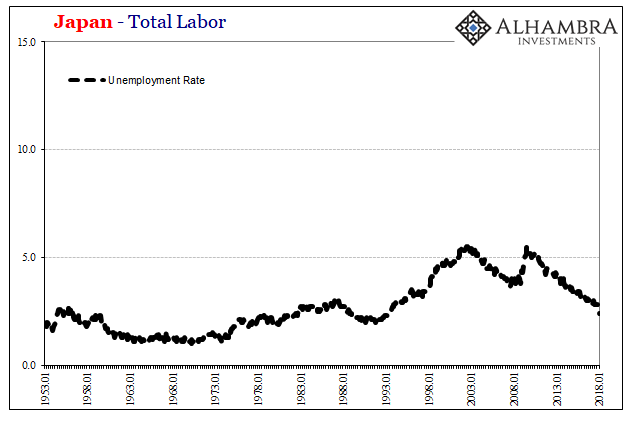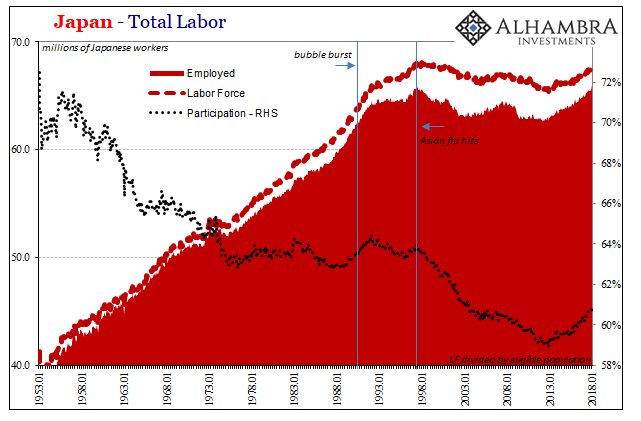For all its tortured economic history since 1989, Japan has never really had an unemployment problem. Going by its unemployment rate alone, conditions don’t ever appear to be all that out of line. At its worst, in both the dot-com recession as well as Japan’s experience during the Great “Recession”, the highest it ever got was 5.5%. That’s more than it ever was during the country’s immediate postwar history, but nothing that betrays permanent depression.

But a comprehensive review of its labor market story gives us an entirely different sense than what comes out of the unemployment rate. Though many Economists claim that Japan’s are demographic problems, there is no doubt that those followed its monetary disintegration. If the Japanese are intent on committing demographic suicide, there’s a macroeconomic reason behind it, not the other way around.

It’s a familiar pattern molded to Japanese circumstances. Japan’s economy was rocked by monetary insanity in the eighties, and then mishandled along the same lines for nearly the three decades thereafter. The Asian flu was for Japan and the Japanese like 2011 was for much of the rest of the world following 2008; it confirmed the economic change as permanent largely because it proved the simple catchphrase I use often; they really don’t know what they are doing. The “they” is monetary policymakers, those who have given themselves the responsibilities of economic stewardship but also the ability to judge their own performance in that task.
Thus, despite the obviousness of what happened to Japan’s labor market, the Bank of Japan is still held in high esteem around the world. The economy didn’t suddenly forget how to grow, it has been mismanaged from the very start and the Japanese are paying an insanely high price for putting up with it.












Leave A Comment